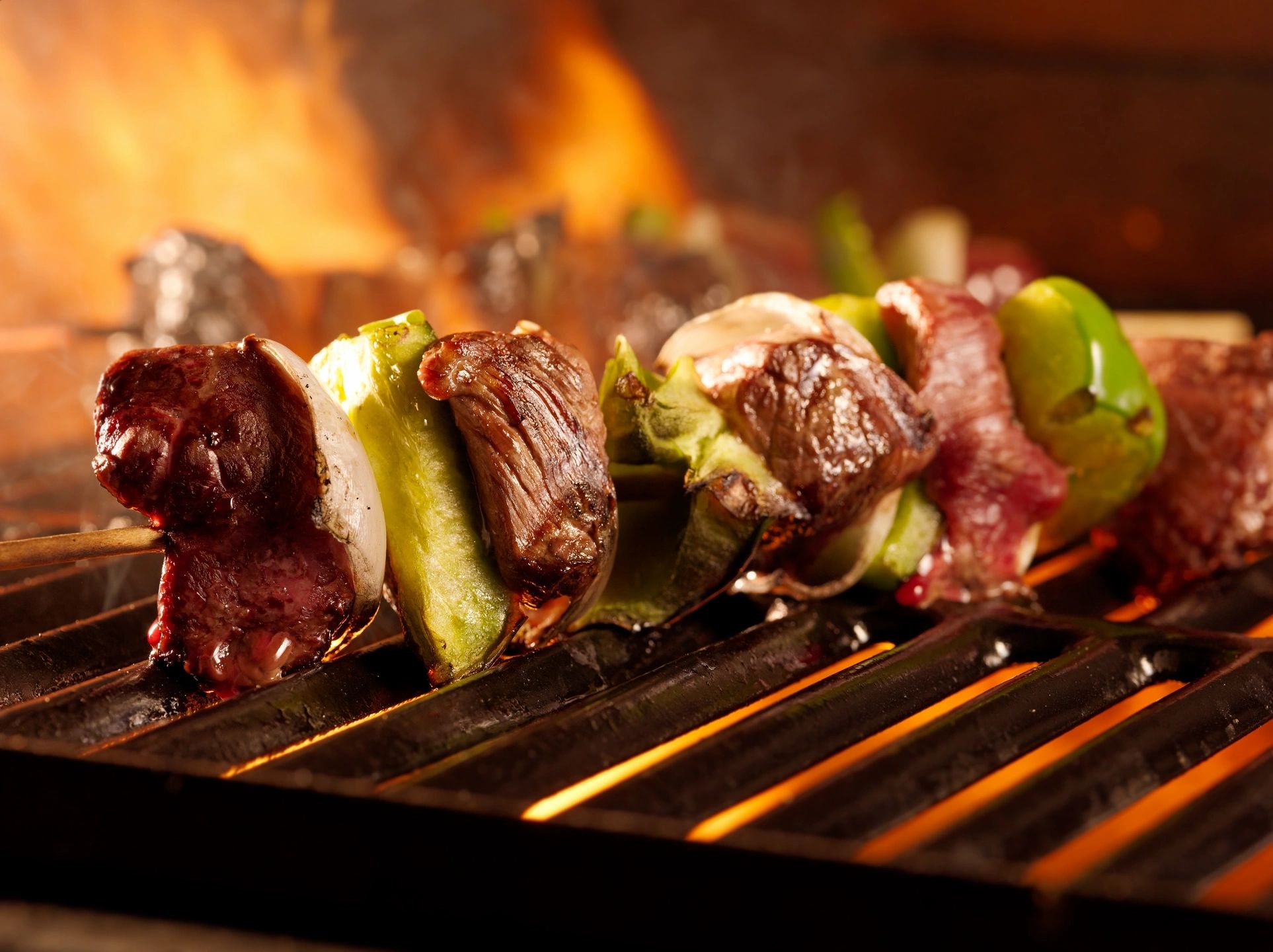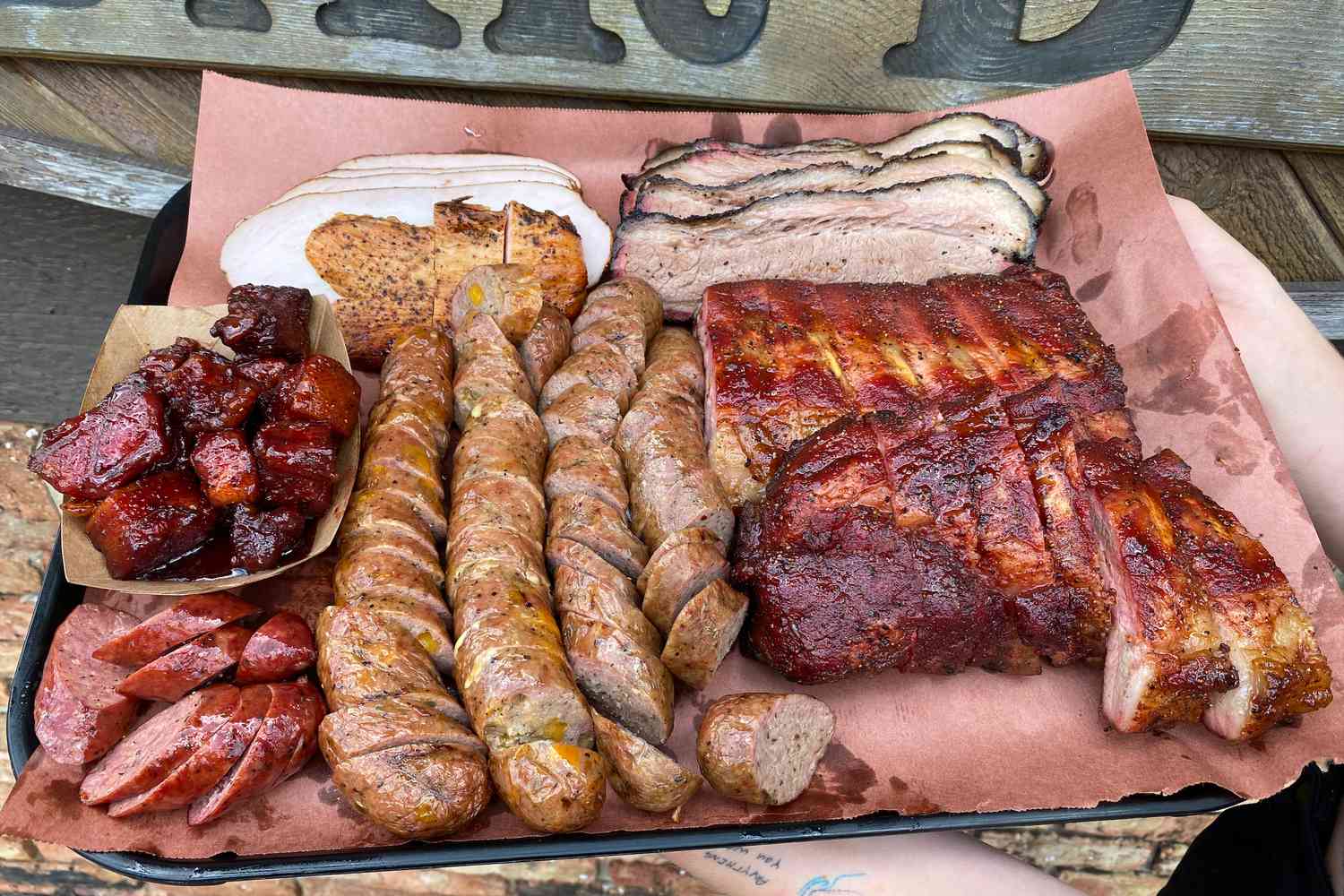Exploring Advanced Techniques and Recipes
Introduction
Welcome to the second volume of our ultimate barbecue guide! In this edition, we will delve deeper into the world of grilling, uncovering advanced techniques and unique recipes that will take your barbecue skills to new heights. From mastering the art of smoking to exploring global barbecue styles, this guide is designed for those who are ready to go beyond the basics and truly impress their guests with exceptional barbecue dishes. So, grab your apron, fire up your grill, and get ready to embark on a flavorful journey of culinary excellence.
Advanced Grilling Techniques
The Science of Smoking: Achieving Perfectly Smoked Meats
Smoking meat is an art that requires patience, precision, and a deep understanding of the process. In this section, we will explore the science behind smoking, from choosing the right wood to maintaining the perfect temperature. Learn how to achieve that coveted smoky flavor and tender texture that makes smoked meats irresistible.
- Selecting the Right Wood: Different woods impart distinct flavors to your meat. For instance, hickory and mesquite provide a strong, bold flavor, while apple and cherry offer a sweeter, milder taste. Experiment with different wood types to find your preferred flavor profile.
- Maintaining Temperature Control: Consistent temperature is key to successful smoking. Invest in a good quality smoker and use a digital thermometer to monitor the internal temperature of both the smoker and the meat.
- Smoking Times and Temperatures: Different meats require different smoking times and temperatures. For example, a brisket might need 10-12 hours at 225°F, while ribs could take 5-6 hours at the same temperature.
Reverse Searing: The Secret to Perfectly Cooked Steaks
Reverse searing is a technique that involves cooking the steak slowly at a low temperature before finishing it off with a high-heat sear. This method ensures an even cook throughout the meat and a beautifully caramelized crust.
- Step-by-Step Guide:
- Preheat your grill to a low temperature (around 250°F).
- Season your steak generously with salt and pepper.
- Cook the steak indirectly on the grill until it reaches an internal temperature of 10-15°F below your desired doneness.
- Remove the steak from the grill and increase the temperature to high (around 500°F).
- Sear the steak directly over high heat for 1-2 minutes per side until a crust forms.
- Rest the steak for 5-10 minutes before serving.
Rotisserie Grilling: Juicy and Flavorful Meats
Rotisserie grilling is a fantastic method for cooking large cuts of meat evenly while keeping them juicy and flavorful. In this section, we’ll cover everything from setting up your rotisserie to perfecting the cooking process.
- Setting Up the Rotisserie: Ensure your grill is equipped with a rotisserie kit. Balance the meat properly on the spit to prevent uneven cooking.
- Cooking Techniques: Baste the meat periodically to keep it moist. Use a drip pan to catch the drippings and prevent flare-ups.
- Rotisserie Recipes: Try a classic rotisserie chicken, herb-crusted leg of lamb, or a succulent pork roast.
Exploring Global Barbecue Styles
Argentine Asado: The Art of Fire and Meat
Asado is the traditional Argentine method of grilling that emphasizes simplicity and the quality of ingredients. Learn how to recreate the authentic flavors of Argentina with these tips and recipes.
- Building the Fire: Use hardwood charcoal or wood logs for an authentic flavor. Create a two-zone fire with a hot side for searing and a cooler side for slow cooking.
- Cuts of Meat: Popular choices include short ribs, flank steak, and chorizo sausages. Season the meat with coarse salt before grilling.
- Chimichurri Sauce: A classic Argentine sauce made with parsley, garlic, vinegar, and olive oil. Drizzle it over the grilled meat for an extra burst of flavor.
Korean Barbecue: A Flavorful Feast
Korean barbecue is known for its bold marinades and interactive grilling experience. Discover the secrets to creating a Korean barbecue feast at home.
- Marinades: Common ingredients include soy sauce, garlic, ginger, sugar, and sesame oil. Marinate the meat for at least a few hours or overnight for maximum flavor.
- Grilling Setup: Use a tabletop grill or a traditional Korean barbecue grill. Cook thinly sliced meats like bulgogi (marinated beef) and samgyeopsal (pork belly) quickly over high heat.
- Side Dishes: Serve with an array of banchan (side dishes) such as kimchi, pickled vegetables, and steamed rice.
Jamaican Jerk: Spicy and Aromatic Delights
Jerk is a style of cooking native to Jamaica, characterized by its spicy and aromatic marinade. Learn how to create authentic jerk dishes that pack a punch.
- Jerk Marinade: Key ingredients include Scotch bonnet peppers, allspice, thyme, garlic, and ginger. Blend them together to create a thick paste.
- Meats: Chicken and pork are traditional choices for jerk cooking. Marinate the meat for at least 24 hours to allow the flavors to penetrate deeply.
- Grilling Method: Cook the marinated meat over indirect heat, using pimento wood or charcoal for an authentic smoky flavor. Finish with a quick sear over direct heat.
Elevating Your Barbecue Game
Crafting the Perfect Barbecue Menu
Creating a cohesive and impressive barbecue menu involves balancing flavors, textures, and cooking techniques. Learn how to plan a menu that will wow your guests.
- Starter Ideas: Grilled appetizers like bacon-wrapped jalapeno poppers, grilled shrimp skewers, or charred vegetable platters.
- Main Courses: Offer a variety of meats such as brisket, ribs, and grilled fish. Include vegetarian options like portobello mushrooms and grilled tofu.
- Side Dishes: Complement the main courses with sides like coleslaw, potato salad, and grilled corn on the cob.
- Desserts: Finish with grilled desserts like peaches with honey and cinnamon, or grilled pineapple with a sprinkle of brown sugar.
Pairing Beverages with Barbecue
The right beverage can enhance the flavors of your barbecue dishes. Explore different drink options that pair perfectly with grilled foods.
- Beer: Light lagers and pilsners pair well with smoky flavors, while hoppy IPAs complement spicy dishes. Dark stouts are great with rich, meaty dishes.
- Wine: For red meats, try a robust red wine like Zinfandel or Malbec. White wines like Chardonnay or Sauvignon Blanc are excellent with grilled fish and chicken.
- Cocktails: Refreshing cocktails like mojitos, margaritas, or a classic whiskey sour can balance the richness of barbecue flavors.
Hosting the Ultimate Barbecue Party
Setting the Scene: Creating a Welcoming Atmosphere
A successful barbecue party is not just about the food; it’s about the experience. Learn how to create a welcoming and enjoyable atmosphere for your guests.
- Decorations: Set the mood with string lights, lanterns, and outdoor seating. Use checkered tablecloths and colorful napkins for a festive touch.
- Music: Create a playlist with a mix of upbeat and relaxing tunes to keep the energy lively.
- Games and Activities: Keep your guests entertained with lawn games like cornhole, horseshoes, or a friendly game of volleyball.
Grilling Etiquette: Do’s and Don’ts for a Successful Barbecue Party
Hosting a barbecue comes with its own set of etiquette rules. Follow these do’s and don’ts to ensure a smooth and enjoyable event.
- Do: Keep a clean grill and work area. Have plenty of seating and shade for your guests. Offer a variety of food and drink options.
- Don’t: Overcrowd the grill. Neglect food safety by leaving perishable items out too long. Forget to have fun and enjoy the company of your guests.
Troubleshooting Common Grilling Mistakes
Even experienced grill masters can encounter challenges. Learn how to troubleshoot and fix common grilling mistakes.
- Overcooked Meat: Use a meat thermometer to avoid overcooking. Rest the meat before slicing to retain juices.
- Undercooked Meat: Ensure the grill is properly preheated. Use indirect heat for larger cuts and check the internal temperature before serving.
- Flare-Ups: Trim excess fat from meats to reduce flare-ups. Keep a spray bottle of water handy to control flames.
- Sticking Food: Oil the grill grates before cooking and avoid moving the food too soon. Use non-stick spray or a grill mat for delicate items.
Conclusion
With the advanced techniques and unique recipes covered in this guide, you are now equipped to take your barbecue skills to the next level. Remember, the key to great barbecue is practice, patience, and a passion for creating delicious meals. Whether you’re smoking a brisket, grilling a steak, or exploring global flavors, let your creativity shine and enjoy the process. Happy grilling!
Stay tuned for the next volume of our barbecue guide, where we will dive into more specialized topics and continue to explore the endless possibilities of the grill.




